How to lead with Disney magic
Maybe you’ve run up against them in your professional travels or heard one present a keynote at a conference. Or worked with—or for—one of them. We’re referring to those with a Disney connection, present or past. You’re struck by the pattern: they seem to know something—something more—than the average numbers-crunching, MBA-trained leader. They radiate the presence of hospitality superstars.
As if they’ve been sprinkled with fairy dust by a leadership guru named Tinkerbell.
There are reasons why the Walt Disney Co. is the world’s largest entertainment company and the seventh most recognized brand in the world. One of these is that it lives by, and teaches, a hospitality and leadership ethos recognized as potent enough that Disney ultimately created a separate line of business just to share its secret sauce with paying customers from industries as far removed from the Magic Kingdom as any could be.
Like healthcare. Like automotive, banking, finance, retail and manufacturing.
It’s called Disney Institute. Not to be confused with Disney University, which is the inhouse training arm for its “cast members.” But more about this in a moment. Let’s start at the beginning of the story.
Enter Mr. Disney, Er, Walt
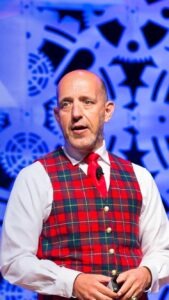
Walt Disney was a failure before he was a success. “He went bankrupt with his first studio in Kansas City after only 18 months,” affirms Jeff Barnes, who is often referred to Dr. Disneyland because he created a college course devoted to Walt and the man’s obsession that became the world’s most iconic theme park. Barnes is also a keynote speaker and author of “The Wisdom of Walt: Leadership Lessons from the Happiest Place on Earth.”
But Disney himself was very definitely a leader. “I’ve been blessed to be on stages with Disney legends and Disney imagineers, executives that were hired by Walt personally and worked alongside him,” Barnes says. “I asked them, ‘What was it like for you the day that Walt died?’ Here we are, 55 years later, and to a person, not one of them was able to answer that question. Decades later, it’s still overwhelming, that emotional connection.”
When Walt shared his vision for building Disneyland, even his own wife, Lily, hated the idea. “Why, those places are filthy,” she reputedly said, referring to the hundreds of amusement parks, many of them shabby, already in operation around the country. “That’s the point,” Walt replied. “Mine will be clean.” And when he hired his first imagineer, Van Arsdale France, to train the crew of his new park, he gave two directives, according to Barnes.
Read More: 4 Reasons to Take Your Groups to Walt Disney World Now
First, create a team “dedicated to creating happiness.” Second, this team should also be dedicated to providing service. “And so,” Barnes continues, “take any Disney park anywhere in the world today on any given day, and 70% of the guests or more are return visitors. And if you ask them why they came back, it’s almost never about a ride or an attraction. It’s about interacting with the cast.”
If you’ve visited a Disney park—and who hasn’t?—you’ve seen the cast member nametags. Most prominent: first name, never a title. Walt hated to be called Mr. Disney. “Disneyland only has two misters,” he would say. “Mr. Toad and Mr. Lincoln. Call me Walt.” This lack of formality, this status-leveling underpinned his concept of customer service.
Disney, er, Walt, had an instinctual feel for the human touch that underpins customer service and inspires loyalty. Long before Disneyland, in 1937 during the Great Depression, for instance, he would bring dinner to his animators to keep them motivated as they labored late into the night to complete his studio’s first feature-length animated film, “Snow White and the Seven Dwarfs.” In a way, he was foreshadowing the kinds of perks Silicon Valley tech companies made famous many decades later. Why was that a big deal? Well, the company’s cupboards were so bare that Walt and the film’s director, David Hand, worked under a shared single light bulb to save electricity.
“Be Our Guest,” a book produced by Disney Institute, recounts another lesson Walt imparted to his team. Early on, some of his Disneyland execs thought they needed their own administration building. Walt said no. “I don’t want you guys sitting behind desks,” he told them. “I want you out in the park, watching what people are doing and finding out how you can make the place more enjoyable for them.”
Same message when Walt learned his staff was going off-property to eat lunch. “Stand in line with the people… You eat at the park and listen to the people!”
He had a personal apartment constructed above the Fire Station and overlooking Town Square inside Disneyland, from where he could watch visitors get first impressions of his new creation.
Barnes likes to tell the story of Main Street USA, where all Disneyland guests enter the park. It was a risk. Unlike all the existing amusement parks, there wasn’t anywhere to spend money except at the shops and restaurants, which in the beginning were leased to third-party operators. There weren’t any rides there. Sure, it was “the best version of Main Street anywhere in the country,” but then what did Walt do? He put “this medieval castle” at the end of the street, at the entrance to Fantasyland.
“Who puts a castle on Main Street?” Barnes asks. “But we can’t get to the castle fast enough. It’s a little crazy, right? Sometimes as leaders, we have to take risks. A lot of Walt’s movies lost money before they ever made money, and the opening day of Disneyland was a complete disaster. And he just kept moving forward.”
The Secret Sauce
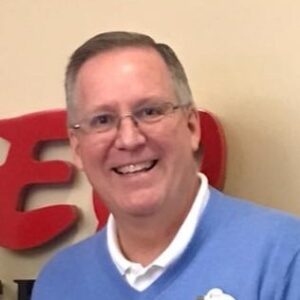
The moving forward, now 55 years since Walt’s death, has codified a way of doing business that became a marketable product itself. Former Disney CEO Michael Eisner launched Disney Institute for that very purpose in 1996. Originally it had a real campus on Disney World property in Orlando, but since 2003 it has existed as popup programming in Orlando and at Disneyland Resort in Anaheim, California, throughout the year.
The institute has also offered a traveling series of Keys to Excellence conferences. This certainly further burnishes the Disney brand, and this professional development outreach has been an economic buffer for the parent company: It’s been in peak demand when business times are tough and companies see an a more urgent need to attract and retain customers.
So, what are the key ingredients of the Disney secret sauce? And how might these be of value to meeting profs?
According to the institute’s website, one of the simplest, yet most powerful leadership lessons Walt imparted was: “You don’t build it for yourself. You know what the people want, and you build it for them.”
It continues: “So how can we truly know what the people (our customers) want? The simple answer is to treat them as though they are guests in our own homes and ask them face-to-face, in person. Save the survey or online chat for later. Think about it. We would never welcome guests to a dinner party and then ‘manage the event’ from across the street, or even across the hallway. Nor would we rely solely on a post-event survey to ask our guests if their expectations were met.”
This begins to explain the appeal of the Disney approach to businesses not known for the personal touch—health care, for example. As Bruce Jones, who recently retired after 25 years at the Institute, where he was the principal architect of its curriculum, puts it, “Behaviorally, people don’t always understand the medical procedures and the technology, but they understand how family members are made to feel. We try to make everyone feel like a VIP, and we can show them how to do it.”
The Four Keys…and Now a Fifth
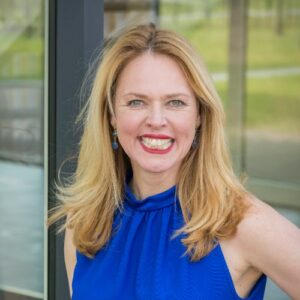
Let’s sample the Disney sauce some more, to discover its key ingredients.
Nienke Bloem, a keynote speaker on “customer centricity,” attended a Disney Institute program and shared her major takeaways. All of them are applicable to event design and being a meetings prof.
1. Purpose Over Task
Every Disney cast member has a specific role, a task, but more important is the overall purpose of the Disney destination or theme park: to create happiness. “That means,” says Bloem, “that in a service moment, where the guidelines are clear for a specific task, there is room to make an exception. The employee may decide to follow his/her gut and go for happiness instead.”
She gives this example: A girl named Alice visited a Disney park on her birthday but was sad because her friends weren’t with her. Noticing this, a cast member arranged to have the characters of “Alice in Wonderland” celebrate with her “because in Disney there are always friends, and a birthday should also be celebrated. Should a member of the staff do this all the time? No. But was it appropriate at this moment…of course.”
2. Prioritize Quality Standards
Walt himself created four quality standards, customer promises (or brand values) to align all cast members toward the same customer experiences. Also known as The Four Keys, they are: Safety, Courtesy, Show and Efficiency. All are equally important, but this order is the hierarchy for their application.
Recently, a fifth was added.
“We want our guests to see their own backgrounds and traditions reflected in the stories, experiences and products they encounter in their interactions with Disney,” said Josh D’Amaro, chairman of Disney Experiences, in a blog post. “And we want our cast members—and future cast members—to feel a sense of belonging at work.
“That means cultivating an environment where all people feel welcomed and appreciated for their unique life experiences, perspectives and culture. Where we celebrate allyship and support for each other. And where diverse views and ideas are sought after as critical contributions towards our collective success.
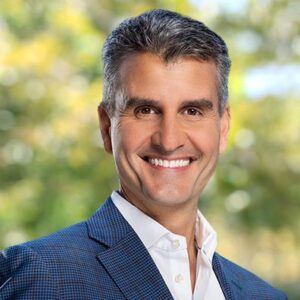
“But as with everything we do, this starts with actively listening, learning and working with our cast and guests to imagine the possibilities.”
After considering more than 100 ideas, the fifth key was created: Inclusion.
3. Organize Service Recovery
Even at Disney, things can go off the rails. That’s when cast members embark on what is termed “service recovery.” If a customer’s expectations are not met, it’s considered essential not only to resolve the problem but also to reconcile the relationship.
In the Disney worldview, it’s never “not my problem.” Instead, it’s: Things can go wrong, they might not be our fault, but they are our problem. So, be prepared to accept and then own the problem.
Creating Moments
Simon T. Bailey is a sought-after keynoter, business coach and author who has worked with many of the world’s leading companies. Early in his career, he rose to head up sales and marketing for Disney Institute, where he experienced firsthand the Disney way.
Read More: How to Design Memorable Experiences
He vividly remembers, in his initial leadership role at Disney, he was failing. “I had a lot of ego. I was in my own way,” he says. “And they were about to fire me.” Instead, he was sent through a process of professional development “to really understand what it meant to be a leader. And my big takeaway is, if you don’t care for the cast members, the cast members will not care for the guests.”
Then, by his third position at Disney, when he was thinking about moving on, he got a call out of the blue. It was from a Disney human resources manager named Janice. She said she was just checking in to see how things were going. When Bailey confessed his restlessness, Janice did not hesitate. Soon he was hooked up with two mentors, a vice president at Disney corporate, and an executive at Epcot.
“I connected with them quarterly,” he remembers. “And they would give me a bigger picture of the company and how my little leadership role fit in. One of them became my Yoda, my go-to person. And I could take my learnings from them back to my department and operationalize them for my team.”
Among his learning:
Everyone has a learning style. “As a leader, it’s up to you to learn what that person’s learning style is and to engage them in the way they want to learn.
Everyone has an appreciation style. He’ll never forget the meeting where one of his team members flushed red and ran out of the room when he tried to recognize her work. At his assistant’s suggestion, he mailed her a handwritten note expressing his appreciation. That worked. “How do you personalize the recognition by understanding everyone has a different appreciation language? You ask them,” Bailey says.
Reflect early and often. “With your own team members, how do you build a bridge from where they are to where you want to go? By celebrating what people are doing right instead of what they’re doing wrong. Then, zooming out of that moment and reflecting early and often. What went well? What can we do better? Because that’s the real learning opportunity.”
He concludes: “The big thing I took away from Disney is that Disney is not in the business of theme parks. They’re not in the business of resorts or Disney Institute or movies. They’re in the business of moments. That’s the brand. That’s the business right there. Meeting professionals are in the business of moments, too.”
Once Upon a Time…
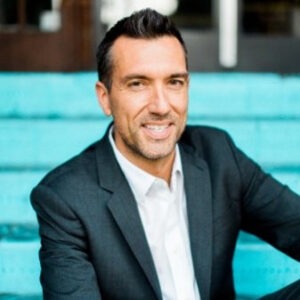
Paul Garcia, director of communications for San Diego Tourism Authority, remembers the day well even now, years later. Once upon a time he was a public relations manager in Disney sales and travel operations, based in Southern California. A Disney team, including PR, marketing and broadcast production, was getting ready for a popular Australian morning TV show that was visiting to beam their broadcast back home.
“It was right around when we opened Cars Land in Disney California Adventure after the release of ‘Cars 2,’” he recalls. “And we were trying to figure out how to stage this Australian segment.” Someone suggested they do it with characters from Cars Land. The pushback was reflexive, immediate. “What’s the story?” came the question. “Why would they be there? Because everything has to be connected to a story, you know.”
He continues: “I mean, really, the big thing about Disney is there was always a story to tell, whether it was for an attraction, for merchandise or for any particular brand component, there’s always gonna be a story behind it.”
That is Garcia’s biggest takeaway from his Disney years and the lessons they taught him. But it’s not the only one. Another was coming up with ideas for a special touch to surprise and delight—that became a way of doing business in the Disney parks that transferred naturally to its hotels and other destinations, he says. “And it was the attention to detail that stuck with me,” he adds. “All too often we get caught up in the big moments, but it’s those layers below that really cement why they’re so well recognized globally. They make the lasting impression.”
This article appears in the May 2024 issue. You can subscribe to the magazine here.




